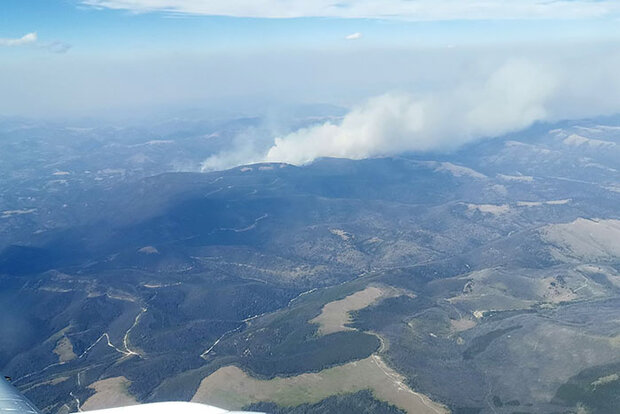Finding missing sources of abundant atmospheric pollutants formic and acetic acid

Aerial view of a wildfire plume. Credit: NASA

Aerial view of a wildfire plume. Credit: NASA
Formic and acetic acid, pollutants that can lead to acid rain or the creation of aerosols, are so abundant in the atmosphere that scientists do not have a full explanation for their sources. Though previous research shows these acids can be associated with wildfires, models usually underestimate the extent. The Climate Program Office’s Atmospheric Chemistry, Carbon Cycle and Climate (AC4) Program funded a new study that investigated emissions, chemistry, and measurement uncertainties of formic and acetic acid using observations from the WE-CAN (Western Wildfire Experiment for Cloud Chemistry, Aerosol Absorption and Nitrogen 2018) and joint NOAA- and NASA-led FIREX-AQ (Fire Influence on Regional to Global Environments and Air Quality 2019) field campaigns. AC4 supported researchers from Colorado State University and the University of Minnesota to build upon the data gained from FIREX-AQ activities and improve our understanding of the impact of wildfires on our atmosphere.